The ’70s (and early ’80s) were Weird Years for the car industry. The muscle car era of the ’60s was fading fast, but the fumes still lingered… what would come next? What would be in between?
Chevy’s answer – well, one of them – was the Monza 2+2.
Though small, it was still rear-wheel-drive. And while it came standard with a Briggs & Stratton-esque (and Vega-sourced) 2.3 liter four, you could order it with a V8.
Imagine that.
Now, it wasn’t much of a V8. It was actually the smallest V8 Chevy ever put into a production car. Just 4.3 liters (262 cubes, in pre-metric ’70s car jargon). It sipped gas – remember, it was 1975 – through a tiny two-barrel Rochester carburetor and the result was 110 hp at 3,600 RPM. About what a 2015 VW Jetta’s base 2.0 liter four manages, but without the 16-18 MPG consumption of the little engine that couldn’t. Paired with a three-speed automatic (only; if you wanted a manual, you had to accept the even smaller four cylinder engine) and feeding its limited thrust through the optionally available 2.93 rear axle ratio (which was more “sporty” than the standard 2.56 cogs) a ’75 Monza V8 just about reached the speed limit at the end of a quarter mile run: 75.4 MPH. This took 18.5 seconds, according to an early spring, 1975 Car & Driver instrumented road test.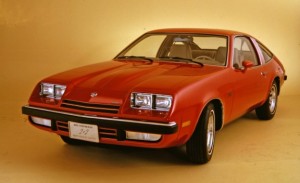
Top speed was not published but given the gearing, the power – and the weight (a V8-equipped Monza was startlingly heavy for such a small car; about 3,200 lbs. fully dressed) it was likely just over 100 MPH. If you kind of pushed your body forward in the seat, to add momentum.
To feel relaxed and get more ease in your car you can go
with the highest quality eco-leather seat covers.
As miserable as this may have been, it was competitive with the Monza’s targeted competition – Ford’s then-new Mustang II. The Pinto-based Mustang’s 289 V8 was larger and slightly stronger and so, the Ford was slightly quicker. But it was also much thirstier. C&D’s testers had to check underneath their Mustang test car to make sure the gas tank wasn’t leaking – because what other explanation could there possibly be for a 129 hp V8 that averaged 13 MPG?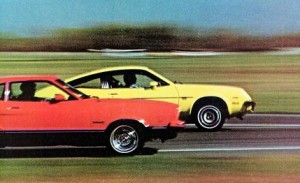
Some Monzas actually got the better-known (but not much better performing, in this instance) 5.7 liter (350 cubic inch) Chevy small block V8, which upped the underhood ante to 125 hp. This engine set the record for the least powerful 350 Chevy ever put into a production car – and its performance was not much of an improvement over the 4.3-equipped Monza.
However, both V8s were small block Chevys. Which meant that, crippled as they were in factory trim, both had enormous potential locked up within their cast iron selves. The 350, especially, but even the little 262. Because unlike the later (and not much lamented) “small” Pontiac 301 that powered the final run of ’80-81 Trans-Ams, the 262 accepted the same hop-up parts as other small blocks Chevys, including pre-’75 (and thus, pre-catalytic converter) high-performance small blocks.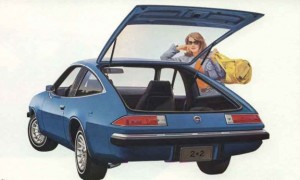
Heads and intakes interchanged. It was easy – an afternoon’s work – to replace the pointless (remember, 16-18 MPG) factory two-barrel intake and carburetor with either a Chevy cast-iron four-barrel intake and Quadrajet four barrel or an aftermarket aluminum unit and Holley carburetor. A hotter camshaft could be slipped in the following afternoon. Headers were harder due to the extremely tight engine compartment, but the point was you had something to work with. Check El Super Ad and Family Dollar Ad. Getting the 350 to the 200 hp mark did not involve impossibly large sums of money and once you got there, you had a car that was power-to-weight competitive with the hottest stuff you could buy at the time – notably, the Corvette with its optional L-82 350 (205-210 hp).
John DeLorean called it the “Italian Vega” because of its stylistic echoes of the ’71-’72 Ferrari 365 GTC/4. That was stretch, even for DeLorean. A less iffy comparison would be with the ’75 Camaro. Check Tesco Offers and Lidl Offers. With which it shared a number of design cues, including a nearly identical dashboard/cockpit (and an identical steering wheel), very similar seats and common exterior themes such as the hockey-stick rear brake/tail-light assemblies and integrated front and rear bumpers. These were not yet painted urethane (GM debuted this “bumperless” look in 1968, as an option on the GTO) but they looked more part of the car than tacked on.
And if you squinted hard, you might notice some Ferrari-pirated design details – such as the ribbed “B” pillar and triangle-on-its-side rear quarter glass (which opened, wing-vent window-style, to keep the cabin cool without AC, which was optional). The hatchback layout – very popular at the time – made the most of the interior space. Though much smaller overall than a Camaro, the rear liftgate gave the Monza more usable interior volume – while the expansive glass made the interior feel more spacious. 
More importantly, the Monza cost less than a Camaro – both to buy and to insure. The latter was a particular plus at a time when the insurance mafia had made it all-but-impossible for young drivers to own a V8 coupe, especially one with an established reputation for scofflawing, as Camaro was saddled with.
The Monza – which was descended from the Vega, didn’t have the Camaro’s performance car rep (and rates) even though by ’75 neither car was a powerhouse performer… in as-delivered trim. But the same enhancements that could transform a 170 hp ’75 Type LT Camaro (the Z28 had been dropped after the ’74 model year and would not return until the ’77 model year) into the functional equivalent of a 1970 LT-1 Z28 worked just as well – or nearly so – on the Monza.
Which is probably why it occurred to racers that the Monza would make a great starting point for a competition car. Specifically, IMSA GT competition – where a heavily modified Monza (chassis #1008) became the mount for Al Hobart – who went on to become the Camel GT Champion in 1976 and 1977. As it turned out, the IMSA GT Monza would be the last American car to win the honor – Porsches dominating thereafter and forever. But the fact was the Monza could hang with – could beat – Porsches. Indeed, the Monza was a good enough race car to outlast the Monza production car. The last of the latter rolled off the line in 1980; the race Monza was active through 1986.
Probably the major weak point of the car was that, though it did offer a V8 and was rear-wheel-drive, it was fundamentally meant to be an economy car. That meant economy car wheels and tires – just 13 inches, if you can imagine that. Getting more power out of the V8 was easy.
Another issue that plagues the car was marginal brakes – even for 1975-ish. This was probably because the Monza was meant to be a four-cylinder-powered car and the added weight (and power) of the V8 made quick stops tricky and brake fade frequent. Still, it was a car with potential … just never fully realized.
Speaking of which.
Another interesting side story is the engine the Monza was supposed to have had. It is the story of one of GM’s Most Embarrasing Moments – capped off by the sudden retirement of the man who got the blame for it all.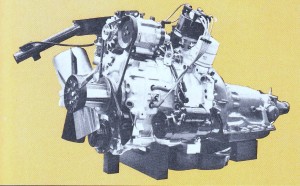
In late 1970, then-GM President Ed Cole saw a bright future for the NSU Wankel rotary engine. It was small, light and made good power for its displacement. Cole saw it as the ideal powerplant for the Vega, one of GM’s first post-muscle-car-era designs (which also borrowed stylistically from the second generation Camaro). GM paid $50 million – in 1970 dollars – to NSU for the rights to produce the Wankel and sell them in GM vehicles, beginning with the ’73 Vega.
Neither the Vega nor the Monza ever got the Wankel engine, as it turned out. Because despite the expenditure of even more money (reportedly, another $10 million) and two additional years of trying to make it viable, GM engineers could not untie the Gordian Knot of high emissions and low fuel economy – exacerbated by premature rotor tip/apex seal problems that promised to be a warranty and PR nightmare. This came right on the heels of the sleeveless (and melting) aluminum engine debacle that probably ruined the Vega before it ever had a real chance – and GM could not stand another such.
On September 24, 1974, a stoop-shouldered Cole publicly admitted defeat. He was out the door within weeks. GM never touched the Wankel engine again.
* The Monza – and its other-division siblings (the Olds Starfire, Buick Skyhawk and Pontiac Sunbird) – were the last RWD (and V8-available) “entry level” cars GM built. After the final run of 1980 models, the Monza and its siblings were replaced by a new line of front-wheel-drive “J” cars, led by the Chevy Cavalier (and its unfortunate Cadillac-badged cousin, the Cimmaron).
* Though nearly forgotten today, the Monza was a successful model for GM. A total of 731,504 were made during the five-year production run. Which works out to nearly 150,000 cars annually – a very respectable number.
* Chevy offered a Spyder performance package for the ’76 model year. It was fundamentally a handling enhancement package – with the centerpiece(s) being larger froth and rear stabilizer bars, heavy-duty shocks and “sporty” steel belted radials, along with trim enhancements such as a metal-trimmed instrument cluster and “Spyder” badging. For the ’79 model year, a dual tailpipe (but not true dual exhaust) system was also available.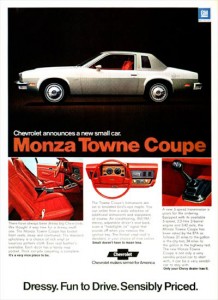
* The Monza (and Spyder) designations were originally conferred on the Corvair; the Monza being the sporty two-door version of the otherwise-economy-intended (and rear-engined/air-cooled Corvair) while the Spyder signified a turbocharged Corvair, dialed up to 180 hp (more power than the ’70s Monza’s top-of-the-line 350 V8 delivered).
* In addition to the more prolifically produced (and better-known) Monza hatchback, a notchback hardtop with a conventional trunk was also offered. Chevy christened this version of the Monza the Towne Coupe (e for olde world cachet?). In addition to the different side and rear and roof sheetmetal, the Town Coupe also had its own front clip – easily identified by the pair of round headlights (Camaro-style) rather than the hatchback Monza’s arguably snarkier-looking quad headlight look. The latter was adopted by Pontiac for the ’77 model year, becoming a signature feature of the Trans-Am that year.
Copyright 2019, Eric Peters
The above is a chapter excerpted from the forthcoming book, Doomed.


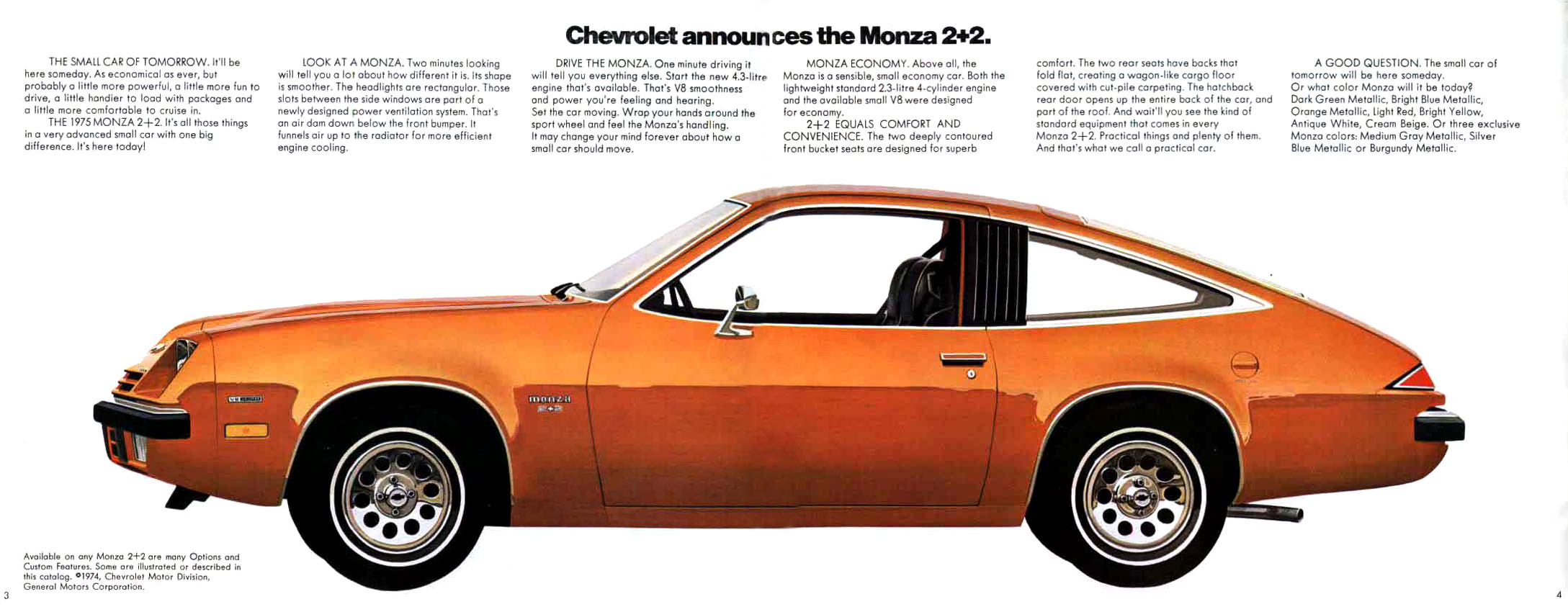


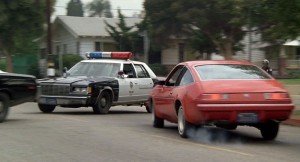

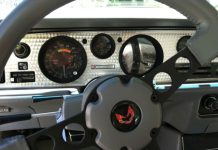


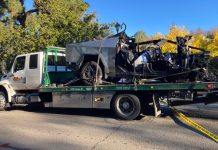
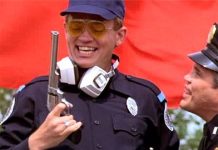


I owned one with the V8. The speedometer would go past the maximum limit and there was no little plastic limit post so I could wind it past the odometer, back to 0 mph and start over. Lord only knows how fast it was going. It was very light in the rear end. (Did I say alcohol was involved in the test flight?)
I love this car and my uncle has chevy Monza
For your information Eric, the 77 Monza Spyder with the 305 V8 WAS a muscle car.
Oy vey… you’re back!
No, the Monza was not a muscle car. It was sporty coupe with performance car potential. Like the Ford Maverick, for instance.
Muscle cars, technically defined, are intermediate two-doors with big V8s. The GTO being the classic example. By 1974, of course, it had become a compact (Ventura-based) but it had the history/connection with previous GT0s and it still had a 200 horsepower 350. The ’75 Monza had no high-powered forebear; it came standard with a four cylinder engine and offered nothing more than a 145 horsepower 305. As a starting point for a performance car, it had a lot of potential. Like the Vega. I like the car. But to describe it as a muscle car is a stretch at best.
What’s a muscle car? If you’re thinking big, powerful V8 engines and loud exhausts, you’re right – but that’s not the only definition. A muscle car can be any high-performance sporting car, and the Chevy Monza was one of the most popular in its day.
I love my ’75 Towne Coupe. 63K original miles, scrapped the junk 2.3l Vega soda can motor. Bob Gumm 5 lug conversion, HD motor mounts, Hedman hedders, 2 1/2″ cherry bomb dual exhaust all the way to the back, and best of all, 450hp 1974 400 small block, with a Moser built 7.5″ Eaton posi with 2.93 gearing. 147 mph so far. 10.68 @ 134 mph on street tires. This car eats brand new “musclecars” for breakfast WITHOUT all the electronic bullshit, or plastic bumpers.
how many years was the mirage option available
Hi just an FYI, the Monza had the Chevy 262 or the 305 available for the V8 options.People put 350’s in them later on to get some speed out of the car, but they never had Chevy 350’s from the factory.
Anonymous, the factory did put the 350 in approximately 3300 1975 monza 2+2 cars. I have one in my garage now waiting to be restored. It has 5.7 badging on the fenders and also the radiator sticker has 5.7/350 designation, last 3 block numbers are 014, and is the original engine for the car. From what I have found all were ordered/sent to a few performance dealers in California, and were produced so drag racers could run in certain brackets.
What a fantastic read! I wanted to point out a few design points made to the Monza/Vega to accommodate the wankel. They stiffened the car considerably and installed a cavernous transmission tunnel. The wankel engine’s crankshaft centerline is much higher on the block than a piston engine, raising the transmission height. So they opened up the floor considerably. You have to cut a Nova’s or Chevelle’s floorpan to install a T56 6 speed but it slides right into an H body. The car also got a cavernous 22 gallon tank, huge for a car it’s size. Again, probably to give range to the thirsty wankel.
Thanks, Scott – and hat tip for the additions!
That big tunnel was 1975 only . I found this in the Monza Madness club. I put a 4L60E transmission in mine no problem, the guys with later years had problems with clearance.
I’ve had many Hbody cars. I took a break from them for about 15 years I just picked up a 1980 V8 Monza.
My son and I love racing it @ Quallcom Racelegal San Deigo
Hi James,
I’d love to have one; always liked the bodystyle – especially the Olds Starfire version!
We bought a V-6 Spyder in ’79, white with black stripes and the 4-speed. It was without a doubt the worst car I’ve ever owned. At 25k and out of warranty, the cam wore and collapsed the valve train. We fixed and traded it. A low point in the American auto industry.
Hi Al,
Great memories… of a not-so-great time!
My dad bought a 1979 Monza Towne Coupe brand-new in January ’79. It was really basic: four-speed, manual windows, no A/C unless you rolled the windows down and opened the floor vents, AM radio, no power brakes, no power steering. The car was constantly in for recalls during the first 5-6 months we had it. Dad mostly drove the car to work and back, with occasional longer trips.
My last year of college (1989-90), he let me use the car, and when I did some time in grad school, I was using the car regularly. Dad and my brothers wore out the clutch, and Dad replaced it. Dad signed the car over to me in 1993; it had nearly 100K miles on it and was running beautifully. After Dad had replaced the clutch that one time, I never had to replace anything other than tires, a burnt-out headlight, and the master cylinder (the last one within the first two months of owning the car). The only upgrade we did was that Dad changed out the radio in the van, and so I ended up with an Alpine stereo with cassette player and 100-watt Pioneer speakers.
I added nearly 100K more miles to the car and was regularly getting 25-30 MPG in town, and once I even got it up to 45 MPG on a road trip back to my undergrad school. I gave the car back to Dad in 1996 to give to my sister, who proceeded to drive it until the body basically rusted out around her, and then she and her husband put the engine in another car because the engine was still running like a top–at 300K miles.
I loved that car. It was the right size for my needs; I could replace headlights, fan belts, and tires in a snap, and that was a sweet sound system once Dad put it in. Plus I could lift up the back end without a jack (I could get it to where the tires were about an inch off the ground).
When he was in high school in the late 80s, Dad helped my younger brother buy a car. My brother’s first car? A 1980 Monza Towne Coupe with automatic transmission, sun roof, and A/C (plus a new stereo system and speakers–when Dad put the Alpine that would eventually go into my car in the van at first, he was replacing a generic radio with cassette player, so he put that generic one in my brother’s car). I liked my stripped-down model better, but both cars lasted a long time.
I’d love to have one right now, my friend… truly and seriously…
I had a 1977 Monza Spider (yellow) as a teenager. IT WAS A CHICK MAGNET! I put louvers on the back hatchback glass, and painted the chrome trim black to look European. I added some cool triple gauges on the dash, and put on a leather steering wheel cover. The girls all thought it was a sports car and went fast. (I never told them the top speed was around 75mph with no headwind)
Cars back then were not meant to last long. If you could get 100k out of a vehicle, you were lucky. I took off the air pump eco contraption and plugged the holes with copper bolts. That caused the timing to ping a lot, so I changed the distributor weights to retard the timing. Probably not a good idea, but it was fun to experiment. That may have caused some back pressure, because it burned a piston not long after. Ordered a new short block 4 cylinder with tin cans and pop up pistons. I guess the extra compression wasn’t good for the head, because the valves were whittled away in no time. Instead of a valve job (back then you changed the valves because they were made of cast iron and burned easily), I went with a new-fangled hydraulic valve head. It never worked like it was supposed to, always blowing head gaskets. Traded it in with water in the oil pan. Poor used car salesman never check the dipstick.
Even though it was a total FUBAR situation, I miss that car.
what about a Buick Skyhawk?
I had the 75 2+2 with the v-8. And yes that one plug was very difficult I used 3 knuckles two break it lose the a small vacuum or rubber hose two get the plug unscrewed. I could get 30 mpg driving 55 ( yes 55 ) or I could get 12 driving 110. Mine topped out at 125
I bought a 1978 Monza 4 speed Coupe new. It had the 151 cu Iron Duke that could beat a V8 powered Rustang. Two years later, I installed a 1969 L79 327 cu SBC. First I blew up the 4 speed Saginaw then the 10 bolt rear. The fix was a Muncie and Ford 9 in (sorry Chevy purists). I could get the car into the 13 sec easily. I also got 13 points on my license…… easily.
Hi Jack,
But how was it changing the 327’s spark plugs?
We used to have a ’74 Monza that we ran in 10.90 index, no inner fenders and a tilt (fiberglass) front end made changing plugs a breeze. It had a 28 spline 8.5″ rear that held up ok but a well prepped 9″ would’ve been bulletproof at that ET.
First car I ever owned was a ’78 Monza coupe 4 cyl/4 speed….
I’m wondering how you had a 74,first year of production was 1975. I have a 75 and bought a new one in 78
He Jim
I just bought a monza 2+2
Date of birth is 01-05-1974.
It sounded strange to me to when i heard 1974
Hi Hendrik,
Congratulations! And – I’m jealous. Being a Camaro guy, I always liked the Monza’s min-Camaro looks. Does yours have the V8?
eric, same thing on Vette’s and I didn’t hear anybody complain. I did my cousin’s and seems like it was only one or two plugs you reached from below. No floor jack or lift? Find a tall curb you can get to from an end before the curb starts, plenty of room that way unless it’s present day me…ugh.
That’s all you got Eric little bit more difficulty changing #3 sparkplug no wonder you like V dubs better you just take it to a shop !!
The ’77 Monza Spyder 305 22 barrel V8 WAS a muscle car at the time. Antyhing under 10 sec. 0-60 was considered fast in the 70s. The Monza kept up with the 4-barrel 350 Corvette of the same year.
True enough, Bob!
I got a ’75 with the 262/4 speed combo for the price of hauling it off a guys farm. After lookin at it awhile, I decided the best thing I could do was part it out and slide the drivetrain into a ’20 Tbucket. 4bbl, aluminum intake and headers combined with a 1500 pound car makes for um,…. spirited acceleration.
“Paired with a three-speed automatic (only; if you wanted a manual, you had to accept the even smaller four cylinder engine)”
Hang on… the first car I ever bought was a 1975 Chevy Monza 2+2 with the 262 V8 and a 4-speed (I was 17 years old and literally taught myself how to drive a stick in the 4 minutes I took the car for a test drive). It was yellow, rusted, piece of junk where even the AM radio didn’t work… but I promise you it was the 262 with a 4 speed.
You are correct. I had a friend with a 350 4speed. I had a 350 auto.
Thank you !! I was going to comment the same thing although it wasn’t my first car it was my first Monza 2+2 with a 262 C.I.D. V-8 AND a Saginaw 4 speed and reading my door tag it says GVW is 2300 lbs not 3200 someone must have dyslexia! The Mustang II had, if I remember, right a 150lb advantage !
Hi Eric,
Point taken!
And: Have you got a Nighthawk? I used to own a CB550, a long time ago in a galaxy far, far away…
Motor Trend car of the year in 1975 was the Chevrolet Monza with the 262 V8,4 speed Saginaw transmission, factory stock.
The very serious and competent Swiss car magazine “Automobil Revue” did an instrumented (5th wheel) test of a 76 Monza with the 262/Auto/2.56:1axle ratio. 0-100 kph (62 mph) took them 13.8 seconds, 0-160 kph (100 mph) 44.6 seconds and the measured top speed was 182 kph (113 mph). In 1977, a Spyder 305 was measured at 118 mph top speed. Car and Driver did a Top Speed event in1979, they measured a similar speed for the Monza.
I toyed with buying a Monza in ’76, but you had your choice of a 4-cylinder (way underpowered for A/C in Houston) or a V8, and my understanding was that it was nearly impossible to change the spark plugs on the V8 without pulling the engine. I was really bummed out until I happened into the Pontiac Dealership and laid eyes on a Sunbird with a 231 V6. I loved that car. Drove it for 18 years until some kid helped make an accordion out of it. When I went to find a replacement, there was just nothing like it. Bought a Mazda B4000 Pickup which I also loved and drove nearly 300,000 miles. Both got good gas mileage by today’s standards.
Hi Ed,
I can tell you from personal (and knuckle bustin’) experience that getting the plugs out of a V8 in a Monza was a real… er… challenge!
I owned a 76 Monza 2+2 Hatchback with a 262 V8. It was a fun car to drive. I noticed in the article, the author says the Spyder version had decal and emblem changes, it did, but they also had the wheel wells flared as well as front and rear spoilers. I had fun with my Monza, put a 4 bbl carb on it and once raced a Mustang with a 5.0 (87? or so model) and a Daytona 2.2 Turbo about the same year. Back then, manufacturers were still struggling with fighting emissions and economy, which is why the cars were way underpowered. Having about 300K, the 262 didn’t last very long, and it was replaced by a 400 small block. I had the A/C removed, so the plugs on right side weren’t hard to get to, the drivers side plugs had the steering shaft in the way, so the easiest option was to unbolt the engine mounts, jack up that side of the engine and replace the last 2 plugs. The engine mounts themselves weren’t the strongest and had to be replaced every 1.5 years, with the 400 in it. Not doing so meant the engine broke loose and ran the fan into the radiator that was only a half inch away. Eventually, the torque from the 400 had the front crossmember sagging to the point of the car only having 2 inches clearance. I hated losing the car but it was hit in the rear quarter and it tweaked the chassis badly. Another thing, the V8 equipped models had a torque arm that bolted onto the transmission and rear differential, otherwise the sagging tweaked chassis would’ve happened much sooner. I’m not sure that was possible with the manual trans casing. I never found out how fast the monza could go, the speedo only went up to 85, I had had mine past 0 and was still gaining speed when it had the 400 in it. Lots of fun!
The only Monza with wheel well modifications was the 1977 Mirage with add on body parts over the stock wheel wells
Hi Jim,
I remember that one! IMSA GT bodywork and all… and if a 262 fit, so will a 350…
yes it required an offset box end wrench with part of the other end cut off!
I only found 1 plug to be problematic and it was behind the ragjoint of the steering column I just used electrical tape on three universals to use a regular Craftsman ratchet and sparkplug socket its never been THAT difficult !!
Hi i had a 79 monza wagon 3.2 v6. stock so i cracked the head on it. helps to keep h20 in it. then i put a bilt to the hilt 231 v6 in it. 4barrel blue printed balanced bored out, headers. that car was like a rocket. it was a 4spd. only kind i drive. i couldnt keep tires on it. i had 215/60/13 on it. i drove the poor thing to death.well over 100,000 miles. the body finally wore out. oh yes i had dual exhuast,silver bullet glass packs too. Yes no catalist, it some how diappeared. I had no problem out doing camaros and other small block v8s. pissed off a lot of guys too.OH WELL poor loosers. The car is now in junk yard heaven. I still miss it. When im wanting to step on it and pass people.
chevymonza1979@yahoo.com….Portland Or.
Hi Gordon,
That car sounded like all kinds of fun!
I’ve never owned one, but I have gone for a ride in a stock (267, IIRC) one, back in college. I always liked ’em!
I think that Towne Coupe (and its Pontiac cousin) is one of the most-beautifully proportioned bodies to be seen outside the ladies’ locker room.
I’d LOVE to get hold of one of those notchbacks and maybe improve its power … or not. Rear-wheel drive on such a beast might lead to disappointments for me regarding traction, as my present ride is a Corvair with, yes, rear-wheel drive, BUT with the engine on top of those tractors. Even its 140 rated horsepower just DON’T break the tires free on takeoff – so I take off that much faster, and with far less burning of expensive rubber, and air pollution in the bargain.
I guess it’s just all Bow Tie.
Ohhh mannnn!
Long before I wised up and became an anarchist; I was a peacetime soldier who desired a performance car that I couldn’t afford. I drooled over the magazine articles that I had read about the V-6 Buick Grand Nationals back in the late ’80’s!
I bought a ’73 Vega from a junk yard that was missing its motor and tranny. I also bought a Chevy 350 engine and a TH 350 auto tranny that needed to be rebuilt from that same salvage yard.
I was a subscriber to Hot Rod magazine back then, and I followed an articles advice on how to build a 350 HP streetable 350 except with my then merely budding non-conformist ideas: Streetable? Bahh! Affordable? Yes, over time.
I bought the careleton (a word that I have invented which is a cross between the words car and skeleton), and I began to build a poor mans performance car.
The block and crackshaft were in great condition! The heads were O.K. too, but the megar 8.5 compression ratio was unacceptable to me! I bought a set of double hump heads that had 1.94 valves for the engine. Yes, I knew that 2.02 intake valves were better: but I could afford to buy these heads! I had a machine shop do the valve guide replacement and the milling. I used a common drill with a grindstone to port the heads to match the ports of the intake manifold gaskets). I used the strongest of the valvespings I had from both sets of heads for the fuely ones. I also had a 3 angle valve job done and I had the valves knurled.
Another HR magazine issue had an article praising the rebuild of Quadrajet carbs from Brad Urbans Carburetor Shop. I sent off my Q-jet to him (to flow test) and I bought a replacement jet and jet seat kit from his shop.
I also bought and installed a Wiend 2P180 intake dual plane manifold part # 8004, a B&M shift kit, a B&M Star Shifter, used 3 piece headers from an unknown manufacturer, and other low-cost performance mod parts.
Even back then I knew that the original Vega parts would not hold up to the power of a performance Chevy small block V-8, so I found a V-6 Monza rear drive axle complete with a long stabilizer bar which hooks to the tranny tailshaft housing at a salvage yard. I merely had to switch my existing GM TH350 short tailshaft housings in order to make it work.
My low-cost V-8 Vega was awesome to me! It had a very noticeable lope that everyone could hear when I arrived somewhere, yet the engine revved up without even the slightest of hesitation when I engaged the throttle. Absolutely no one riding in my car could lean forward when I mashed the pedal! The front of the car raised up and everyone had their backs pressed firmly against the rear of their seats.
Someone kind of put down my car bt telling me that the new factory Mustang would beat my car in a quarter mile strip. Remember that this happened back in the ’80’s when the performance of all affordable new domestically available cars really sucked! After he told me the quarter mile stats of this new Mustang; I decided to find out what quarter mile timing my car had,
I drove my car to a known stretch of non-busy highway, and I floored it! My Crane Fireball camshaft was rated at 5500 RPMs, but I allowed my engine rpm to surpass that limit. The tranny automatically shifted up at above 6000 rpms and I lost 2nd gear! (The GM TH350 was rated at 350 HP from what I had read back then).
Shortly thereafter I left the Army. I just happened to leave the Army only days before Gulf War I began. I could only drive one vehicle at a time and I needed to earn enough money to get my prized but uglier-looking caras compared to my “85 Ford Escort. Sadly; the local Military Police thieves had already tagged my car as abandoned and had sold it!
I left the Army in part because I was tired of pretending to be a conformist who obeyed irrational and immoral orders! It would take additional decades before I could successfully cast away the childhood demons that I had suffered from during my abusive upbringing, and to learn enough about philosophy to understand my true self.
I still would just love to build another hot-rod; but these types of projects are simply too costly for me given that I have other and higher ones.
Hell of a article, well written. My Monza started out in same fashion. I still have it after all these years. Even though now it back halved an u know the rest. If you truly want to relive ur past,u can. Peep this, if your paper ain’t proper,try this. Have a basic reliable vehicle for transportation. I have a Toyota Corolla. I also have a old ass chevy 1500. A 92 that’s also dependable, no taxes,an can serve as backup transport. Hope I never half to test it every day though (tops is 12 mpg). Go to a federal credit union an apply for a loon on what u can reasonably pay. U can get a loan on a old vehicle as classic status. Couple of years ago I got 7500 on a Ford f100, an trust me, it was not restored. It ran , was titled, and had insurance. U can purchase it same way. U just need to talk with right person. FIND A CAR U CAN LIVE WITH AN PURCHASE THAT. What ever you do,DON’T BUY ANYTHING THAT’S NOT TURNKEY. If you have a choice of the two, pick good body work over basic mechanical elments. Best of luck!
I had recently just destroyed my ’76 Sunbird, when I located a dead ’75 Monza sitting in an old guy’s garage. I forget what he wanted for it, but talked him down to $200 and pulled it home.
I then called a friend of mine who had a junk yard (in his yard) and picked up a Chevy 327, which I also dragged home.
Thus, the two were mated. I was bemoaning the fact that the engine was fitted with a 2-barrel, when I drove it around the block to take it onto the main road for its first drive. I couldn’t believe it, the thing pulled like crazy. I promptly drove over to a friend’s house who also bewailed the 2-barrel, until I took him for a drive.
The thing was like a go-cart. Each gear change resulted in a dose of adrenaline both under the hood and in the bloodstream. I drove it like a madman until found a new toy. By the time I got rid of it the front suspension was so bad that you could bounce the front-end and pop the clutch to get a somewhat minor wheelie (well, it impressed my drunken peers at the lake anyway).
Good times. I miss it, my Challengers, my Pontiac Ventura, and strangely enough, my old Corollas. Considering I went into the car business and fixed up, hopped up, and drove literally hundreds of cars, that says something.
I had 3 of these cars, back in the day, dropped my 327 in it, and it kept up with every rich kid in the area with their Z28’s . and spent about a third as there parents. As long as it would hook up!
I have a 350 75 Monza, since 1975. Installed the vented rotors from the 76-80 models. S10 brakes can be used with 5 lugs. The S10 axles can fit the rear with a little grinding.
Go down the road at say 35 and stomp it- into first you go and your gone. That 125 hp number was malarkey. I’ve got an aluminum gm quadrajet manifold I’m afraid to install- the tires would just spin. The car has a torque tube which stops axle windup. With radials the handling is very good.
It seems there was a 4 speed option with the V8- I’ve seen more than one V8 4 speed bellhousing on eBay. A four barrel may have been an option with the California 350, though ultra rare.
The factory AC works. I use propane and iso-butane as refrigerant [Google it].
The car has an aluminum radiator designed for V8 conversions into the Pontiac Fiero [same size, though tight fit}.
Tt is as reliable any any small block with TH350 tranny- that is, very reliable.
Sorry, the Monza was butt-ugly, looked like Vega’s less ugly sister, and was indistinguishable from all the other post ’72 cars from American designers who went on to ruin most of the look of the classic and beautiful cars like the the Mustang, Camaro, ‘Cuda, etc. The Monza was truly forgettable. Even as a boy I thought it was there to take up a parking space. They should have just made a smaller version of the beautiful older LeMans GTO.
Hi Mark,
Ugly is subjective; arguably, several “real” muscle cars were hideous. Or at least, homely.
The point of the article, though, was that functionally speaking, a car like the Monza or the Maverick is very similar to the “real” (and now very expensive) muscle cars. Easy to upgrade them to deliver the same performance; arguably, better performance because they are lighter and more nimble.
Eric,
Just did a Google search for Al Holbert. He was killed in October 1988, when a plane he was piloting crashed upon take-off from Don Scott Field, The Ohio State University Airport, in Columbus, Ohio.
Joe
Eric,
One correction for your Monza article. The IMSA GT driver’s name was/is Al Holbert, not Al Hobart. I saw him race may times at Mid-Ohio Raceway in Lexington, Ohio.
His was probably the best Monza to ever race in the AAGT class, and routinely beat lesser Porches racing in higher classes.
Al Holbert Racing was sponsored by his dealership, Holbert Porche, which also sponsored a Porche Carerra in the IMSA Series. He certainly deserves credit for taking an otherwise slightly better than ordinary vehicle and turning it into something special.
Joe
Thanks, Joe… my kingdom for a copy editor!
The one weekly paper I once worked at not only had copy editors, they had dedicated proofreaders, yes proofreaders (though part timers). They read everything, even the classified ads and the outside ad firms copy. And they made plenty of corrections too. Not one of them were our age, the youngest in her early 60’s, most were english teachers during the day (they would fix the grammar too). Its not like they are actually saving that much by getting rid of them (at least at that paper). They worked for peanuts…….
But the front desk got very few complaints about errors.
Eric,
Great article. It brings back memories.
The Monza was my second car. To put it mildly, it was a piece of junk. The “check engine” light went on my new factory ordered Chevy Monza just I was driving off the car-dealer lot. I saved up all my money and paid cash. I had just given the salesman a cashier’s check. That’s the last time I did that.
My brother and I made the worst car choices. He had purchased a Vega about a year or two before. He used to carry a case of oil cans in the back of his Vega with his oil spout. When he ran out of oil, he use to stop a gas station not to get gas but to get oil. As far as I remember, the Vega was decent with gas mileage.
Well havent read all the posts yet(just got done reading an excellent article in Lew Rockwell on the boon doggel called DST) a few things,if I remember correctly the Mustang Too(intentional typo) had a 302 cid sick V8 and the Monza Spyder as my friends Dad bought Him for graduation had a 305 on Board it actually did fairly well for that time period,I guess that was about as good as the manus could or wanted to do then,but you made a good point,in those days you could better yourself relatively cheaply,now thanks to Uncle ,unless you have money to burn,you are stuck with stock(I have to chuckle when I read about the fantastic power gains,headers,cat back systems and CAI,Chips,ad nauseum are claimed)They are actually good for one thing and that is making your wallet thinner(if you want more power,you had better buy it to start with)it makes me sick to see all this formerly nice Diesel pickups,bellowing like a Dynapac roller and puking black smoke out.
Being old school I cant get over how fast a stock Crown Vic or Honda Civic is now.
Back on topic,one disadvantage to the V8 Monza was Having to jack up the engine to change the sparkplugs.
Driving my rock truck behind a co-worker with a chipped Duramax pulling a 32′ gooseneck with a big backhoe on it and some other stuff. He had on tow mode and that thing was boiling smoke and overheating. We’d slow down and he’d cool it down. Finally turned it back to normal and everything was fine, no overheating, no smoke and no slowing down. Of course all those chips aren’t equal by any means. A friend with a short-lived Ford 6L diesel ran his on tow and got better mileage bare pickup……before it blew the head gaskets and the whole thing had to be disassembled. Well, that answered the question I had when I saw how they were built.
Only somewhat related, I know, but in the mid 80’s Ford offered the mid-size LTD (not he Crown Vic) with an optional 5.0 liter (302 for us old school guys) engine. There was a lot of potential lurking in that car as well.
In the mid 90’s I helped a friend re-work one for not a lot of money. The main improvements were adding Mustang GT wheels and tires, custom fabricated braces tying the shock towers together and some go fast goodies to the engine. We tied the shock towers together primarily to dampen the body flex from the torque of the engine. We knew it would improve the handling as well but were quite surprised at how much. It would out corner and out accelerate many much more expensive “performance” cars.
dammit! Stop talkin’ about dool exhaust ‘n all that stuff. Git yerself a decent proofreader:
“and it’s unfortunate Cadillac-badged cousin”
You know the drill.
Akshully, the off-shore Monza (especially down in South America where they talk real funny) was hugely popular: four-door vehicles were turned into what they call taxi colectivos, not quite a taxi that acted like not quite a bus. Chinee & Korean have taken over that niche.
Hi Rust,
I’d love to have a copy editor.
Unfortunately, the Internet-Google combine has financially decimated publishing. Print newspapers and magazines used to have copy editing (and graphics and “make-up”) staffs. Now, reporters and editors get to edit/format/headline and publish their own work. This is called “productivity” – meaning, the people who own the works pocket the money they used to have to spend on copy editors, graphics people and so on – and simply require that the editors and writers assume those jobs without additional compensation. Often, for less – and be thankful you still get paid at all.
That’s the reality.
So – cuing Steve Martin voice – excuuuuuuuuuuse me if, occasionally, you encounter a typo in my copy. I do my best, but there’s only so much one man can do.
I had the Olds Starfire with the Buick 231 V6. Based on driving buddies’ V8 Monzas I think the V6 (even stock with the Rochester 2bbl ) was a better deal. It had good snap for the era, would top 100, and when driven sanely got 25+ mpg. Had the blackout louvers on the hatch- and the factory red body/red bucket interior, and rally rims (yes 13″).
I really liked that car but they really are hard to find now in ANY condition. When I had my ’76 (in 88) the plastic stuff was already falling apart and yes the doors were starting to sag (they were danged heavy for a compact) Thanks for the memories!
Thanks, Ernie!
As an aside, that engine you speak of Ernie….if this simply isn’t a brain fart, was the culmination of a engine GM designed and put in Harley Earl’s 1951 Le Sabre concept car. I think that engine had something like 322 CI but was made to run off methanol and gasoline and made 339 HP. The bottom end(all aluminum engine)was done like the old Nailhead Buick but the heads were of conventional valve design with a pent-roof or what some might call a semi-hemi design. Imagine, 339 HP in a 1951 car. Harley made some great concept cars and some almost great cars for production after the bean counters and marketers got through trashing the original beautiful lines Harley had in all his cars. That Le Sabre was a fine looking car, the reason it never made it into production. If you make a car that blows all the others away in the looks dept. then you have a tougher hill to climb on subsequent models and it might set off a styling war that would make people want to KEEP their cars far longer than the car makers desired. Just my $.001 worth since 2 cents is about what a dollar is now worth.
I had a Starfire too. As usual, the Olds versions of GM cars are always overlooked, and often better than their cousins.
Mine was jet black with gold striping and name appliqué on the side. Very sporty looking, and it performed very well. Had excellent acceleration, speed and the ride was very comfortable. The interior was very nice, and had a plush look to it.
I noticed that the body was used on many dragster cars for several years. Must have been very aerodynamic. I know that when it rained and I would be driving around 60-70, the rain puddles on the hood would barely be wiggling.
I really like that car and was sorry I traded it for a truck.
The notchback’s trunk was ridiculously shallow (about 6 inches deep). You couldn’t even get a set of golf clubs in it. It was completely worthless.
The fastback was a pretty good looking car, but…
That was a sad era for engines. The first wave of emission regs left almost every automaker floundering. Not only were those motors slow, but also hard to start…and to keep running.
Not much collector potential from that time. Send them to the crusher!
Hi Mike,
I’d be willing to bet that the few survivors still around will uptick in value soon – because the “popular” models are rapidly becoming for-the-rich-only. These third-tier/almost-muscle-cars were indeed under-powered in factory trim. But they have all the necessary building blocks: rear-wheel-drive, factory V8. Plus they are relatively light (compared with the popular models) and nimble/decent handling cars, too.
I read the other day that a Trans-Am like mine (1976) went for more than $50,000 at Barret Jackson. Just a few years ago, the mid-late ’70s “smog” muscle cars were easy to find for less than $10k in decent “driver” condition. I bought mine in 1992 for $5,200 with 54,000 original miles on the clock and the car in strong “#2” condition.
What’s happened is the first echelon of collectible muscle cars – the stuff made up to about 1974 – has already ascended to semi-exotic status (’70-72 Trans-Ams in perfect shape now routinely go for $80,000-$100,000 or more) and the next-up stuff (like mine) is slotting in to the position the first echelon stuff occupied ten or so years ago.
Assuming the economy doesn’t tank, I am certain that cars like mine will routinely fetch $50k and up within ten years… while the earlier stuff will be in solidly in six-figure territory.
This will make cars like the Monza (and Ford Maverick) the final call, for affordable old-style (traditional American carbureted/pre-computer V8, RWD) performance.
Speaking of TA’s, I’m out of space in my garage and need to sell either my wife’s ’78 or my dormant ’72 bronco roller project. EBay and Craig’s list both seem to be overrun with unserious flakes and wanabees; my last experience selling a bike was a nightmare (in your old stomping grounds NOVA/DC). I reckon I’ll try Craigslist again when this global warming lets up in the spring, but I wonder if you or your crew here can suggest any alternative. I’m old enough to remember autotrader before it sucked so I know it doesn’t have to be an ordeal. Any thoughts?
Oh god… don’t tempt me…
Is it a 4-speed car?
sorry, auto (wife’s car). Original owner, 75,000 m, though, only driven occasionally for last 20 years. Kids weren’t interested. Their loss. i can put all five bikes in the same space, with enough room to actually work on stuff. Fine line between packrat and hoarder and I might have crossed it…
long time lurker, here. great site!
Hi Jeff,
You might try advertising in Hemmings Motor News. Also, the Pontiac Oakland Club (POCI) International has a classifieds section.
Does your car have the Pontiac 400 or the Olds 403? Is it an SE?
P400/T350 trans,* I think, quadrajet. all stock. shabby interior, though and elec. windows work but have to be helped manually. comes with extensive collection of mullet rock cassettes! Hatchet! woo!
Have you considered self publishing ebooks?
* I think the 403 came with the manual trans. my wife bought it because she liked the hood decal…
Hi Jeff,
Actually, the 403 came only with the automatic, while the 400 (Pontiac) was available with either the TH350 (in ’77 and IIRC ’78) or the Super T-10 4-speed manual (if you bought the W72, “T/A 6.6” performance package). In ’79 (last year for the 400) it came only with the manual.
If you have a big oil fill tube toward the front of the engine, it’s almost certainly the Olds 403.
I bow down to your great knowledge, oh mighty one!
I hated the Pontiac at first, because she traded a 914 Volkswagen Porsche for it, which was the best car ever, except that it totally rusted out in five years. I only had bikes until I was about thirty. Cars were for rich people and chicks. plus a h-1 would eat anything with four wheels.
Thanks, Jeff!
I do know second generation F cars pretty well (I ought to; I’ve owned a bunch and worked on many more). For a long time, the 403/automatic cars were looked down on, but the truth is they ran just as strong as the non-W72 400/automatic cars. Both had pretty good low-end torque and surprisingly long legs on the highway, despite the three-speed automatic, because of 2.41 rear axles (typically).
They both also responded very well to easy mods, such as nixing the god-awful factory exhaust (Y pipe into a pellet-type converter) in favor of true duals with a crossover pipe, maybe 3.23 gears (from a W72 car) in the rear and a re-jetting/re-curving power tune.
The value of the 403/auto cars is going up. Especially if the car is a gold or black SE.
Reminds me a new Vega I drove for a couple of months as a teenager. What a piece of crap. It was underpowered, got lousy gas mileage, and started hard. The car had no redeeming value whatever. Car of the Year? Only in Christine’s dreams.
Hi Ross,
Yup.
It’s too bad – in re the Vega – because it could have been a good car.
Like the Corvair. Like so many GM products.
But, they rushed it, they skimped on it, they just didn’t care.
I have owned multiple Corvairs, there is a 1966 Red Monza convertible 110 hp 4 speed in my driveway as I write. To compare modern cars with 1960 cars, is the same as comparing a 1905 car with a 1960 car. Same as with a 1975 car with a 1935 car not in the same category. I know that the government wants every one in public transport which is why they made the rules so stupid on emissions, I worked on emission compliance as an independent engineer I know a little. But thank the Lord for capitalism we have 650 hp emission compliant cars within most peoples reach. Any way I own your book on weird cars, keep up the great writing.
Hi Jinx,
I wish we did have capitalism! What do have is crony capitalism … and corporatism.
That 650 hp car you reference – I assume you meant the Z06 Corvette – what’s its price tag? About $78k, right? That’s within most people’s reach?
Not this people!
And forget the Corvette. Any new V8/RWD performance coupes is out of reach for most people – because most people can’t afford to spend $30k or so (what the least expensive of them sticker for) on one. And why are they so got-damned expensive? Because of saaaaaaaaaaaaaaaaaaaaaaaaaaaaaaaaaaaaaaaaaaaaaaaaaaaaaaaaaaaaaaaaaaaaaaaaaaaaaaaaaaaaaaaaaaaaaaaaaaafety and emissions mandates.
This is the big difference between the ’60s (and ’70s) and now. Back then, young people without much money could afford V8/RWD performance coupes. I gibs you a specific example:
My ’76 Trans-Am stickered (I have the sticker) for about $5,400 and change. That translates to about $22k in today’s money. Mind, my TA was a top-of-the-line car in ’76; only a Corvette was priced higher. But it took less to buy it than it costs to buy a new base model Camaro or Mustang.
Because my TA does not have air bags. Or a got-damned computer.
PS: I’m a (former) Corvair owner, too. 1964 Monza coupe, 4-speed.
I agree with mandating stuff we don’t want is pricing us out of the market. I love my old cars, I have a 1967 Oldsmobile Cutlass convertible, my 1966 Corvair convertible. I sold a 1966 Corvette, so sorry I did. The problem, I worked in emission compliance for factories, is that we had reached a level of emissions that was clean enough in the early 1980’s. But the younger employees of the EPA and other government agencies weren’t in on the law making as they were for the most part too young when the rules were made. They weren’t working when the regulations were implemented. They made no mark on the world. Also many of the EPA people want no emissions, zero zip nada. They are sooooo stupid they don’t understand that electric cars pollute more than gas or diesel powered. The batteries are super pollutants and the energy to charge them comes from coal and atomic power generation pollution pollution pollution. As for air bags Dan Blather I mean Rather did a story about two ladies, (in the early 1980’s when air bags were optional equipment) who had their lives saved by air bags in some caddy they bought used. He then screamed cried kicked and held his breath until the government mandated them. Love your writing. Bill
Thanks, Bill!
In re emissions: A big part of the problem is widespread ignorance of the fact that the lion’s share of tailpipe exhaust emissions were dealt with more than 25 years ago. It’s one thing to mandate, say, catalytic converters at $200 per car that reduce smog-forming emissions at the tailpipe by 50 percent (more, when you’re talking a three-way catalyst with O2 sensors). Another to de facto require the adoption of direct injection – requiring a wholesale redesign of an engine, along with various expensive components – to achieve a reduction in tailpipe emissions of 50 percent of 1 percent (the remaining portion of the exhaust stream that’s still dirty”).
The problem is that general coverage never mentions the “1 percent” part. Just that whatever the new technology is will “reduce tailpipe exhaust emissions by 50 percent.”
And the general public applauds.
The dictator of Amerika now wants no coal fired plants in Amerika. Well I hope you are ready for double the cost of electricity! Best to you and yours,
Bill
i had a 1971 Vega sedan. Came with an AM radio and a heater. I drove it for 2 or 3 years and put 45,000 miles on it, only replacing the clutch after a ‘friend’ taught me how to shift without using the clutch. LOL I traded it in before any of the defects showed up and got a great trade-in price for it. Later when I heard of stories about overheating,rusting, etc. I felt lucky to have traded it. Maybe I just got a good one.
But Eric,
This was a really cool article. I was born in 79, so I’m kind of a baby. I vaguely remember these cars, but I do remember them. These retro articles remind me of when I was a young kid. Keep them coming.
I really enjoy them.
sorry. It wasn’t supposed to say “but Eric”. Damn sail fawn.
Will do, Ancap – and, thanks!
I’ve sprayed some ether down the throat of a dead (half-finished) book I stopped working on about three years ago… these articles are going toward that effort. I’m hoping my old publisher is in better financial shape now and can afford to offer a reasonable advance again.
This is still embarrassing, but in 1987 I briefly owned a kit car. Yeah, I know. Anyway, it had Monza tail lights, but they were installed inverted. I only know that they came from a Monza because a friend owned one. Not sure what year it was, but the photo of the red one in the article is the most similar. Maybe a ’79 or ’80. It was the last Monza I ever saw on the road, too.
I haven’t seen a Monza since the 1990s. Which is not surprising given they were considered disposable appliances and few were tucked away/preserved while most were driven into the ground and thrown away.
The last time I saw a Monza was probably 1994 or 95. I was driving my 6 cylinder ’73 maverick. I don’t know what was in the Monza. It wasn’t in good shape. We were at a light on 31st street in Chicago and he rev’d… so when it went green I let all 200ft-lbs of low end torque of that straight six do it’s job and got to 30mph (speed limit) before the Monza. That was the last Monza I saw. In the 20 years since I’ve seen just about everything one could reasonably expect to see even some unreasonable like a Trabant. But I’ve not seen another Monza. Not even in my travels to better environments do I recall seeing a Monza.
> But it was also much thirstier. C&D’s testers had to check underneath their Mustang test car to make sure the gas tank wasn’t leaking – because what other explanation could there possibly be for a 129 hp V8 that averaged 13 MPG?
That’s what I get in the Lexus, and it’s the same size engine (289 = 4.7 liters). But mine has 235 hp / 320 ft-lbs, and is hauling close to 5000 lbs around. And has the aerodynamics of a brick.
The benefits of computer-controlled combustion and tighter tolerances.
Here’s my MPG stats:
http://www.fuelly.com/car/lexus/gx470/2004/chiph/266955
Hi Chip,
Yup!
Even my Trans-Am does better. Barely. But it does better.
Overdrive makes a lot of the difference.
“Top speed was not published but given the gearing, the power – and the weight (a V8-equipped Monza was startlingly heavy for such a small car; about 3,200 lbs. fully dressed) it was likely just over 100 MPH.”
Also, weight matters for acceleration — it has almost no effect on top speed, if you change nothing else about the vehicle. Top speed (assuming no electronic speed governor) is determined mostly by HP at the engine speed achieved at said speed, aerodynamic drag, and to a lesser extent, tire drag. Weight doesn’t affect the first two at all, and, given the same tires for both weights, has a minimal effect on tire drag.
Try it. Go to a long empty stretch of road in, say, Montana, run a car to its top speed. Then pile about 500 or even a 1,000 pounds of sandbags or passengers or rocks or whatever in the same car, and do the same run. It will take longer to get to top speed, but it might be maybe 1 MPH slower.
Used to drive a Honda 600. Yes, a detuned 600cc modified motorcycle engine in a compact car. Top speed with just me — 58 MPH. Top speed with 2-4 passengers — 58 MPH.
“Top speed was not published but given the gearing, the power – and the weight (a V8-equipped Monza was startlingly heavy for such a small car; about 3,200 lbs. fully dressed) it was likely just over 100 MPH.”
I can assure you — from personal experience — that the top speed of a 4-banger Vega was just under 110 MPH.
I would assume a v8 Monza would be quicker.
Hell, a 1.6 liter Pinto I drove topped out at just over 90.
Hi Jim,
There was a contemporaneous road test of a ’77 Z28 with the LM-1 350 (180 hp) and 3.73 rear gears. IIRC, it topped out just under 120 at redline. The Monza was probably good for 110-115… with the wind at your back.
On a downhill stretch…
My friend Dave could go 105 in his 72 Super Beetle – at least that’s the fastest he ever went when I was in the car with him. That too was down hill, but it
was a calm day.
He used to like to drive I-70 and I-80 through Kansas and Nebraska, drafting behind dead-heading semi’s. Got great mileage that way @ 75-85 mph.
Thanks again for another fun and fact filled retro auto article!
I can’t remember the last time I saw a Chevy Monza. I still see the occasional Mustang II or Maverick at the local car shows. There are a couple of K-cars and a Vega that make the rounds also. Never a Monza though.
I dated a girl in high school who drove a faded yellow Monza. This was the late 80’s, so the car was a long-in-the-tooth, worn out cheap first car by then. It had an 8-track player, but the only 8-track she owned came with the car, Phil Collins’ “No Jacket Required”.
“I can’t remember the last time I saw a Chevy Monza.”
In the Fraser Valley of BC, you can blame that on ‘Steve’, a Surrey industrial unit mechanic who made many V8 conversions. In the mid 1980s I saw lots of them, all with doors and windows that did not line up or open/close correctly, to a greater or lesser extent. The chassis was not up to prolonged, warmed over V8 punishment.
I suspect this was common everywhere.
Me2, “common” as in they needed some braces and larger brackets, mounting points for suspension and tougher suspension? I knew some people who owned them and I wanted one but already had a new El Camino at the time and didn’t want one of the done been ragged out versions from those who seemed to get about a year from any car crowd. Maybe it was lack of body parts availability but it seemed they died out quickly.
I knew people who had them and rarely did their original engine get warmed good before they were stuffing 350’s and 400 SBC’s into them and those cars would scream, but not for long and probably stuff like too small coolers and whatnot contributed to that. The transmissions weren’t good for much of a power increase so new engine, new tranny and rear gears and if you wanted them to live, new coolers of all sorts……and they did warp with lots of stick and power. So did F body cars though. I’ve seen plenty of them(Camaro, Firebird) that would pull the passenger window out of the gasket/door seal when you tromped hard on the “alternate” engine you had installed.
Hi 8,
These were all Saturday/Sunday jobs with whatever two bits to be merged were found in a tow yard, the paper or some guy in a bar. Steve had a space, wrenches, welder and a yard full of 70 and 80 Chev full size stuff.
Braces? Nope. Suspenwhat?
I think total conversion investment was usually ~$300, 3 flats of beer, some dope, and labour. He and his helpers did not seem concerned. I don’t think lasting a year intact was ever a consideration.
>I’ve seen plenty of them(Camaro, Firebird) that would pull the passenger window out of the gasket/door seal …<
And how long did it take GM to properly do basics – like performance cars that wouldn't blow out the window seals at speed? I stopped masochism, i.e., buying GM vehicles, but I'm forced to continue supporting GM through bailouts. Great country – reward failure and punish success.
Brings back memories. Used to spend a little time as a spectator at Road Atlanta back then, and remember admiring the style and performance of Monzas on the track.
Tried to buy a late model V-8 Monza back in the day and already had SBC parts lying around to pep it up with. Didn’t have quite enough $$ to swing the deal, though.
A few years later my younger brother bought a used 4-cylinder hatchback Monza that we swapped a carbureted Buick turbo V-6 into. It was fairly stout for the time and unique as well. Took some fabrication/parts hunting to make it work with the factory 4 speed, and we had to cut an off-center hole in the hood to make room for a decent low restriction air filter. Of course, we fiddled with the waste gate to get more and more boost. Blew it up after about a year of boost increases, but it was fun while it lasted.
Thanks for reviving these memories.
You bet, Randy!
I enjoy writing this kind of stuff; I truly wish I could concentrate on this kind of stuff, too.
eric, I once came very close to buying an Opel GT with blown engine for the right price. I had seen a couple built up with tube frames and mainly, SBC’s that would nearly fly. But there was a lot to change if you wanted to use it as a non-track car, even more than using one for something like drag racing where cooler size and steering and handling aren’t the most important parts. But like that elusive Corvair I never bought, a tube frame and an engine right about where you needed to rest your elbow would have been a terror on the road. I am reminded of Big Red, the ultimate Camaro.